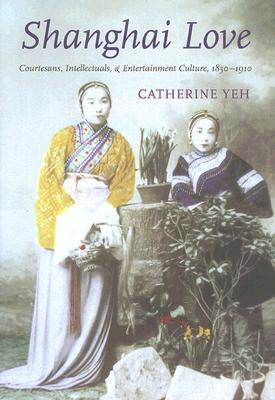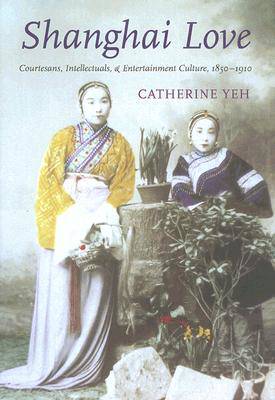
- Afhalen na 1 uur in een winkel met voorraad
- Gratis thuislevering in België vanaf € 30
- Ruim aanbod met 7 miljoen producten
- Afhalen na 1 uur in een winkel met voorraad
- Gratis thuislevering in België vanaf € 30
- Ruim aanbod met 7 miljoen producten
Omschrijving
In this fascinating book, Catherine Yeh explores the Shanghai entertainment world at the close of the Qing dynasty. Established in the 1850s outside of the old walled city, the Shanghai Foreign Settlements were administered by Westerners and so were not subject to the strict authority of the Chinese government. At the center of the dynamic new culture that emerged was the courtesan, whose flamboyant public lifestyle and conspicuous consumption of modern goods set a style that was emulated by other women as they emerged from the "inner quarters" of traditional Chinese society.
Many Chinese visitors and sojourners were drawn to the Foreign Settlements. Men of letters seeking a living outside of the government bureaucracy found work in the Settlements' burgeoning print industry and formed the new class of urban intellectuals. Courtesans fled from oppressive treatment and the turmoil of uprisings elsewhere in China and found unprecedented freedom in Shanghai to redefine themselves and their profession.
As the entertainment industry developed, publications sprang up to report on and promote it. Journalists and courtesans found that their interests increasingly coincided, and the Settlements became a cosmopolitan playground. Ritualized role-play based on novels such as Dream of the Red Chamber elevated the status of courtesan entertainment and led to culturally rich interactions between courtesans and their clients. As participants acted out the stories in public, they introduced modern notions of love and romance that were radically at odds with the traditional roles of men and women. Yet because social change arrived in the form of entertainment, it met with little resistance.
Yeh shows how this fortuitous combination of people and circumstances, rather than official decisions or acts, created the first multicultural modern city in China. With illustrations from newspapers, novels, travel guides, and postcards, as well as contemporary written descriptions of life in foreign-driven, fast-paced, cutting-edge Shanghai, this study traces the mutual influences among courtesans, intellectuals, and the city itself in creating a modern, market-oriented leisure culture in China. Historians, literary specialists, art critics, and social scientists will welcome this captivating foray into the world of late nineteenth-century popular culture.
Specificaties
Betrokkenen
- Auteur(s):
- Uitgeverij:
Inhoud
- Aantal bladzijden:
- 440
- Taal:
- Engels
- Reeks:
Eigenschappen
- Productcode (EAN):
- 9780295985671
- Verschijningsdatum:
- 17/01/2006
- Uitvoering:
- Hardcover
- Formaat:
- Genaaid
- Afmetingen:
- 187 mm x 258 mm
- Gewicht:
- 1265 g

Alleen bij Standaard Boekhandel
Beoordelingen
We publiceren alleen reviews die voldoen aan de voorwaarden voor reviews. Bekijk onze voorwaarden voor reviews.











